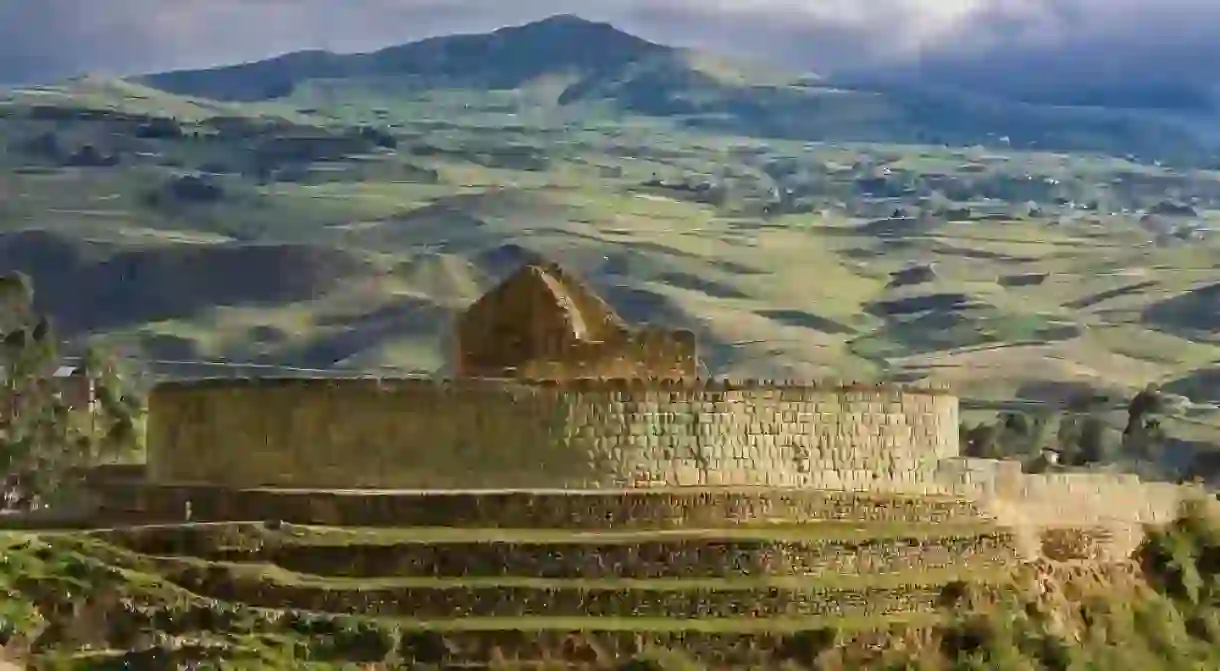5 Of The Best Inca Ruins In Ecuador

As you may remember from history class, a large part of Western South America was once populated by the Incas. The large pre-Columbian empire stretched from what is modern-day Chile through Peru and into the a large part of Ecuador. While the most well-known site in Peru is the famous Machu Picchu, Ecuador has its own share of lesser-known, though equally historically significant, vestiges of the fascinating Incan past.
Ingapirca
Building, Ruins

Located in the Cañar province, the Ingapirca ruins are the most significant vestige of Incan existence in all of Ecuador. The word Ingapirca itself can be broken into two parts and means Inca (Inga) and wall (pirca), or Incan wall. Indeed, the walls of these ruins are remarkable, held together in the typical Incan way of being cut to perfection without using any adherent, as are the walls in Machu Picchu. Although no one is quite sure as to all of the history surrounding the edifice–partially because the Spanish did not make it their priority to discover and record such histories–the site is believed to have been a temple. When the Spanish arrived they, in fact, took from the structure many of its large blocks to be used in other building projects. But the site still stands, drawing many visitors and serving as a monument to this ancient people.
Pumapungo
Museum, Park, Ruins
In the center of Cuenca’s historic area you will find the Pumapungo Archaeological Park. Though the site once served as center for Incan culture, the ruins carry on today as a part of Cuenca’s modern society and the park is now known for its lush gardens and animal inhabitants. After walking the old walls and enjoying the park, be sure to visit the ethnographic museum connected to the park to gain a richer understanding of the history of Pumapungo and the indigenous people of Ecuador.
Rumicucho
Park, Ruins

A short drive from Quito, quite close to one of Ecuador’s most visited sites (Mitad del Mundo), the ruins of Rumicucho sit on a large hill. Rumicucho, which translates roughly to “corner of stone”, is believed to have been a significant location for several pre-Inca people groups as well as the Inca themselves. Remarkably close to the Equator, the site was reputedly used as both a military site and, later, a place of worship. Visitors may opt to take a tour of the ruins, the best option to learn more about their history and explore the ancient stone walls.
Agua Blanca
Museum, Park, Ruins, Spa

Located in Machalilla National Park on the Pacific side of Ecuador, Agua Blanca (White Water) is the one of the last remnants of the Monteño culture in Ecuador. Take a tour of the small archaeological museum depicting the history of this culture as well as traces of the structures that once stood there. The sulfur pool there acts as a mud bath with spa-like effects.
Todos los Santos
Ruins
Discovered in Cuenca in the 1970s, the ruins of Todos los Santos (All the Saints) is a tribute to how cultures build upon one another. The initial Cañari construction and Incan addition over that remained hidden under a Spanish flour mill for years, until being uncovered during the excavation of the site. After the initial discovery many artifacts were also discovered from the site.
Ecuador Tours and Trips
Natural Feature

Planning a trip to Ecuador? Find out how this small country packs a big punch – be it in the rustic highlands of Cotopaxi National Park or the dense rainforests or the Amazon, or perhaps even the surreal Galapagos Islands.













